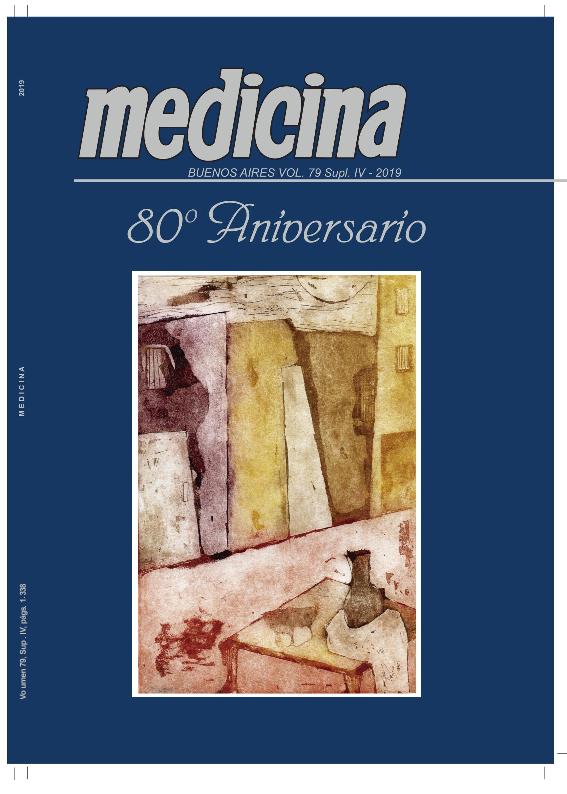Evento
Cytotoxicity of zinc nanoparticles biosynthesized by microorganisms on human keratinocyte cell line
Lopez Venditti, Eliana Daniela ; Calienni, Maria Natalia
; Calienni, Maria Natalia ; Martinetti Montanari, Jorge Anibal
; Martinetti Montanari, Jorge Anibal ; Bustos, Pamela Soledad
; Bustos, Pamela Soledad ; Paraje, María Gabriela
; Paraje, María Gabriela ; Páez, Paulina Laura
; Páez, Paulina Laura ; Guiñazú, Natalia
; Guiñazú, Natalia
 ; Calienni, Maria Natalia
; Calienni, Maria Natalia ; Martinetti Montanari, Jorge Anibal
; Martinetti Montanari, Jorge Anibal ; Bustos, Pamela Soledad
; Bustos, Pamela Soledad ; Paraje, María Gabriela
; Paraje, María Gabriela ; Páez, Paulina Laura
; Páez, Paulina Laura ; Guiñazú, Natalia
; Guiñazú, Natalia
Tipo del evento:
Reunión
Nombre del evento:
LXIV Reunión Anual de la Sociedad Argentina de Investigación Clínica (SAIC); LI Reunión Anual de la Asociación Argentina de Farmacología Experimental (SAFE); XXI Reunión Anual de la Sociedad Argentina de Biología (SAB); XXXI Reunión Anual de la Sociedad Argentina de Protozoología (SAP) y IX Reunión Anual de la Asociación Argentina de Nanomedicinas (NANOMED-ar)
Fecha del evento:
13/11/2019
Institución Organizadora:
Sociedad Argentina de Investigación Clínica;
Asociación Argentina de Farmacología Experimental;
Sociedad Argentina de Biología;
Sociedad Argentina de Protozoología;
Asociación Argentina de Ciencia y Tecnología de Animales de Laboratorio;
Asociación Argentina de Nanomedicinas;
Título de la revista:
Medicina (Buenos Aires)
Editorial:
Fundación Revista Medicina
ISSN:
0025-7680
e-ISSN:
1669-9106
Idioma:
Inglés
Clasificación temática:
Resumen
Metal nanoparticles -NPs- (10-100 nm) have an important antimicrobial activity which suggests possible biomedical applications. Zinc NPs (ZnNPs) are widely used for different products. The aim of this work was to investigate the toxicity of ZnNPs biosynthesized by microorganisms, in a human keratinocyte cell line (HaCaT). ZnNPs were synthesized using Pseudomonas aeruginosa (ATCC 27853) and were characterized by UV-Vis spectroscopy and by transmission electron microscopy. HaCaT cells were incubated for 4 h and 24 h at different ZnNPs dilutions (1/2, 1/5 and 1/10). RPMI 1640 culture medium with 5% FBS, a metal precursor salt solution of ZnSO4 (0.1 and 0.25 mM), and a bacterial growth control of biosynthesis (BGC), were used as controls. Cell viability was evaluated by MTT assay, crystal violet and neutral red tests; reactive oxygen species (ROS) were studied by DCF-DA; superoxide dismutase (SOD) activity was determined by riboflavin-NBT method; and reduced glutathione (GSH) by Ellman reactive. ZnNPs cell capture assays were performed by fluorescence microscopy and changes in cell migration were evaluated by wound healing assay. As determined by fluorescence microscopy ZnNPs were able to enter HaCaT cells. The toxicity assays indicated that cell viability was significantly altered by ZnNPs 1/2 and BGC conditions after 4 h and 24 h incubation. ROS levels increased after 4 h incubation with ZnNPs 1/2, 1/5, and BGC, while a 24 h incubation, 1/10 dilution also augmented ROS. SOD activity increases at all ZnNPs dilutions tested, and with BGC. GSH was not modified by any treatment. Finally, the presence of ZnNPs and BGC in the culture media affected cell migration. Altogether these results suggest that ZnNPs are able not only to enter into skin cells but also to modify human keratinocyte viability, oxidant/antioxidant cell balance and cell migration. More studies are needed to unravel the mechanisms underlying these alterations.
Palabras clave:
Cytotoxicity
,
Nanoparticles
,
Microorganisms
Archivos asociados
Licencia
Identificadores
Colecciones
Eventos(CITAAC)
Eventos de CENTRO DE INVESTIGACIONES EN TOXICOLOGIA AMBIENTAL Y AGROBIOTECNOLOGIA DEL COMAHUE
Eventos de CENTRO DE INVESTIGACIONES EN TOXICOLOGIA AMBIENTAL Y AGROBIOTECNOLOGIA DEL COMAHUE
Eventos(IMBICE)
Eventos de INST.MULTIDISCIPL.DE BIOLOGIA CELULAR (I)
Eventos de INST.MULTIDISCIPL.DE BIOLOGIA CELULAR (I)
Eventos(IMBIV)
Eventos de INST.MULTIDISCIPL.DE BIOLOGIA VEGETAL (P)
Eventos de INST.MULTIDISCIPL.DE BIOLOGIA VEGETAL (P)
Eventos(UNITEFA)
Eventos de UNIDAD DE INVESTIGACION Y DESARROLLO EN TECNOLOGIA FARMACEUTICA
Eventos de UNIDAD DE INVESTIGACION Y DESARROLLO EN TECNOLOGIA FARMACEUTICA
Citación
Cytotoxicity of zinc nanoparticles biosynthesized by microorganisms on human keratinocyte cell line; LXIV Reunión Anual de la Sociedad Argentina de Investigación Clínica (SAIC); LI Reunión Anual de la Asociación Argentina de Farmacología Experimental (SAFE); XXI Reunión Anual de la Sociedad Argentina de Biología (SAB); XXXI Reunión Anual de la Sociedad Argentina de Protozoología (SAP) y IX Reunión Anual de la Asociación Argentina de Nanomedicinas (NANOMED-ar); Mar del Plata; Argentina; 2019; 138-138
Compartir



